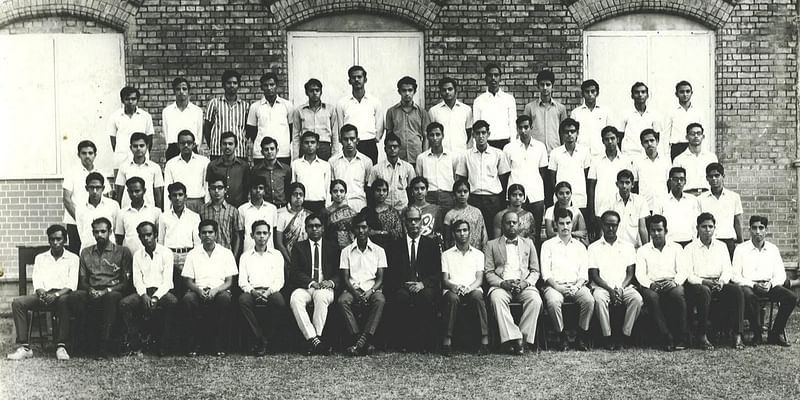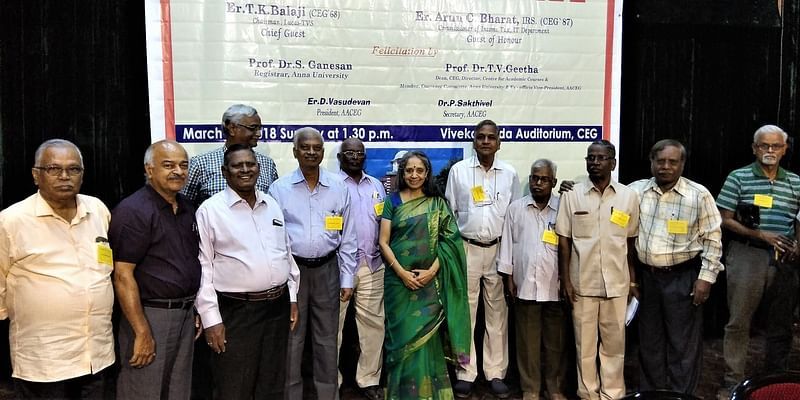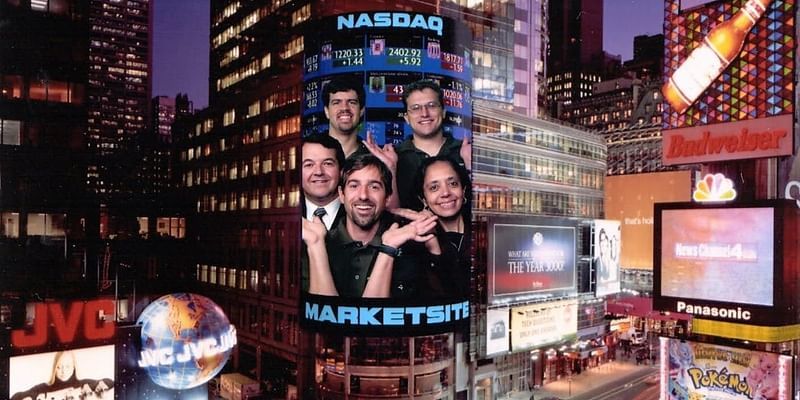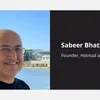Radha Ramaswami Basu needs no introduction. One of the few women pioneers in the Indian tech industry, she is widely known for spearheading ’s (HP) entry into India. Her over 30 years of experience in technology comes on the back of growing HP’s electronic business software division into a $1.2 billion operation, and being Chairman and CEO of Support, a NASDAQ-listed company.
As Shantha Mohan, a global software engineering leader and author, wrote in her book Roots and Wings: Inspiring Stories of Indian Women in Engineering, “Innovation is a constant theme that runs through Radha’s life.”
Hailing from Chennai, Radha’s family gave a great emphasis on education and considered mathematics and science as the holy grail. “I went to an all-girls school. At school, I saw myself attracted more towards science than mathematics. For me, it was more about applications, thus, physics really interested me,” Radha tells YourStory.
Radha was the youngest among three siblings, and had a tenacity of breaking rules and get into trouble. In one such transgression, Radha stepped out of school to attend a lecture by someone who was talking about mechanics and medical engineering.
“It was at that moment I realised that I had to do engineering. However, coming from a traditional family, there was a push for me to focus more on BSc Mathematics and not engineering. But I applied for an engineering degree without anyone knowing about it. I was in the newspapers to have applied for engineering in 1966,” says Radha.

Radha Basu was among just 17 women among 2,800 boys studying at Indian Engineering College - Guindy
A girl among 2,800 boys
From an all-girls school, Radha went to Indian Engineering College - Guindy which had over 2,800 boys and 17 girls.
“Once I got in, I realised why I was told not to join engineering. It was a very different environment. But it was a fantastic experience. I went from a protected environment to an open environment. It taught me to be my own person. It taught me the value of relationships with guys. Some of my best friends are from my Guindy,” she recollects.
After completing her engineering, Radha decided to pursue Master’s and decided to move to the US in January 1972. She got her masters from the University of South California in Computer Science and Biomedical Engineering.
At that time, the government gave her $8 for 30 days as scholarship assistance. But even though she didn’t have many resources, she learned to survive on the food she would get at orientation ceremonies of all the departments in the university.
“Some of my best leanings came from my engineering college days, and the first year in the US, where I learned to develop a can-do attitude,” says Radha.
After finishing her studies, she joined HP Labs.

Radha Ramaswami Basu with alumni from her engineering college
Starting at HP
“I was working on ultrasound transducer technologies, and was doing all the wonderful things I wanted to do in the medical field. The thesis for my master’s was on computerised ECG, and I would go on to even publish a paper,” she narrates. She also went on to work and build things on the instrumentation side.
After spending 20 years at HP in engineering and general management, in 1985, Radha founded the company’s operations in India and set up the first software centre of any multinational in Bengaluru. She then became General Manager of Hewlett-Packard Electronic Business Software Organisation, which she helped grow to a $1.2 billion global operation.
“I got the opportunity to meet the then Prime Minister Rajiv Gandhi, and we decided to set up HP Systems. David Packard (HP co-founder) was just brilliant and he always empowered me. I still wish that I could be like him and empower everybody in the way he did,” explains Radha.
During her stint at HP, Radha set up the company’s entire operations in India amid the presence of software giants including Infosys, Wipro, and others. “We grew to a 2,500 person R&D centre, and also started a joint venture with TCS. These were the people who led the IT revolution in India during the late 80s and early 90s. It was then that Indus Entrepreneurs was formed to create TiE. I was even awarded by NASSCOM,” she recalls.
The trek that changed it all
Radha then decided to take what she calls one of the toughest decisions of her life – leave HP in 1999. The decision came after her husband and she went on a 22-day trip to the Everest Base Camp.
“It was a real journey. When you trek up there, you realise how small you are and nature is so awesome. It was such a transformative journey for me; it was a journey with myself, nature and the awesomeness of the universe. I thought about what I wanted to do and it also gave me a chance to be a little away from my job at HP which I love, and I realised I was at the end of the road. I came back and told my CEO that I was going to leave HP,” she narrates.
She decided to join support.com as CEO from July 1999 in its early days and learn about how to raise funding, what to do about it, how to take risks, and build a product company from scratch. Until May 2006, Radha went on to lead the company through its IPO and built Support into a leader in support automation software.
“We went for it and took the company public on NASDAQ. Three weeks later, in July 2000, the entire IPO market shut down for about 14 months (due to Dot-com Bubble Burst). But we kept building and soon, we were able to do a secondary offering about two years later,” adds Radha.

Support.com got listed on NASDAQ in 2000
Giving back to society with tech
In 2005, Radha and her husband decided to do something for the people using technology, and started Anudip Foundation.
The social enterprise works with young people coming from low-income households, especially young women, and not only trains them in English, but also ensures workplace and technology readiness. It allows them to work with local employers and figure out what skills are needed to get an actual job.
“I found that there were a lot of young women who were very good at being trained in technology, but they couldn't leave their homes to get jobs,” she says.
Till now, Anudip Foundation has trained 120,000 students.
“We started in Kolkata and decided to focus on the eastern region because outside the flourishing cities of Bengaluru, Chennai, Delhi and Mumbai, but nobody was really paying attention to these regions. It led to the birth of iMerit” says Radha.
The idea behind iMerit Technology Services was to experiment with a small group of youth who come from India’s rural areas and tribal groups, and upskill them digitally to equip them to take on online projects. The team also got some help from Microsoft and eBay.
Radha, along with eBay founder Pierre Omidyar’s Omidyar Network India, put in seed money and went on to add solutions as well as provided aid.
Today, iMerit is a leading artificial intelligence (AI) data solutions company that provides high-quality data across computer vision, natural language processing (NLP), and content services that power machine learning and AI applications for large enterprises
It provides end-to-end data labelling services to Fortune 500 companies in a wide array of industries, including agricultural AI, autonomous vehicles, commerce, geospatial, government, financial services, medical AI, and technology.
The company is funded by Michael and Susan Dell Foundation, Omidyar Network, and Khosla Impact.
Advising techies, particularly women techies, Radha says, “Never let your curiosity die. When we at iMerit were looking at AI, I had no idea about what AI is and what it does. But I had the drive and curiosity to learn. Let nothing stop you, also keep yourself open to always learn and ask for support. When you ask for what you need, there is nothing that really stops you.”
Edited by Kanishk Singh



